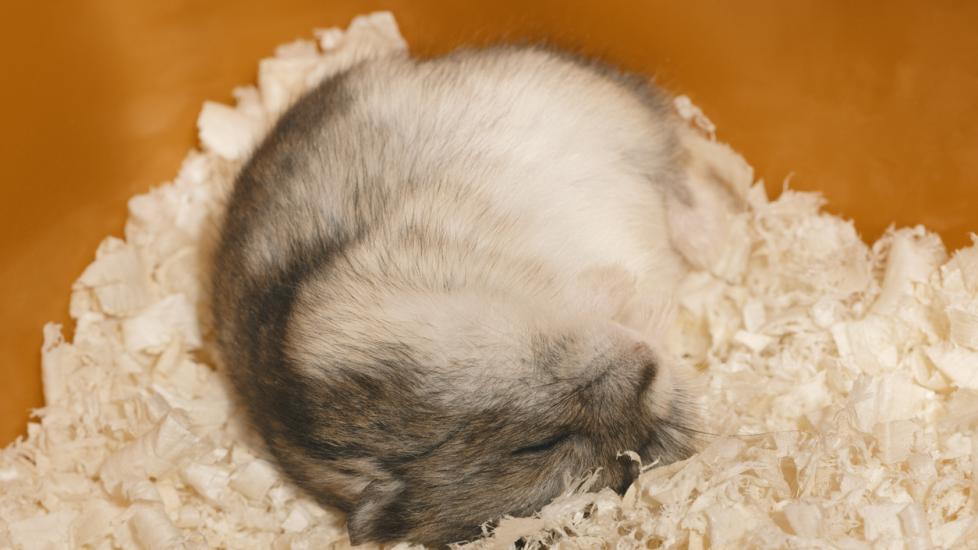Do Hamsters Hibernate?
New hamster parents are often surprised to find their hamsters barely moving, sometimes even appearing dead. But it many cases, this behavior—known as torpor—isn’t a sign that your hamster is truly sick or dying. Instead, it’s a natural adaptation to most hamster’s native desert environments. Depending on the situation, your hamster may even go into true hibernation.
What triggers this behavior, and if there’s anything you can or should do about it, depends on the type of hamster you have and the underlying causes of the hibernation.
Is My Hamster Hibernating or Dead?
A hibernating hamster will appear to be asleep or even dead. They will be cool to the touch and may feel limp or stiff. They will not eat, drink, or eliminate. There may be no visible heartbeat or respiration, but you may see sporadic, shallow breathing if you look close enough.
Not all species of hamsters have the same forms of hibernation behavior. European hamsters will sleep for significant periods of time during the winter months. This is known as true or obligatory hibernation. By contrast, dwarf species do not hibernate under normal conditions but will do so when the environment requires it. Female hamsters hibernate for shorter lengths of time than male hamsters.
Torpor vs. Hibernation
Torpor and true hibernation may seem similar, but they aren’t the same thing. Both behaviors help the hamster to survive when conditions are not favorable.
Torpor is a type of hibernation that can occur at any time of the year. It is also known as permissive or facultative hibernation because it is triggered by the hamster to conserve energy. This can happen when food is scarce or environmental temperatures are low. Torpor lasts hours to days. It ends when conditions improve. An extended torpor could result in death of the hamster due to dehydration or hypothermia.
Obligatory or true hibernation occurs when certain species become fat in the summer months and hibernate in the winter months. Sometimes torpor and hibernation are used interchangeably, because both torpor and hibernation result in slowing of the heart and respiratory rates and a decrease in activity and body temperature.
Hamster Hibernation Conditions
A hamster’s ideal temperature range is 65-75 degrees Fahrenheit. If the temperature falls below this range for 24 hours, some hamsters will enter torpor. Other hamsters require 1-2 months of continuous cold exposure to go into hibernation. The exact trigger for torpor depends on the type of hamster.
Other triggers for torpor include:
-
Keeping your hamster in the dark for 12 hours a day
-
A lack of food and water, or reduced access to food and water
-
A lack of safe housing or bedding material to burrow into
What To Do if Your Hamster Is Hibernating
If you find your hamster in a possible state of torpor or hibernation, first check their breathing and heart rate. Next feel for their body temperature. It may be cool to the touch.
If your hamster is in a state of torpor, gradually improve the conditions, including temperature and light, to safely revive them. If the torpor has lasted less than a day, increasing the body temperature may be all that is needed. If it’s been longer, or your hamster doesn’t revive, provide 12 hours of bright light, along with adequate food and water. A gentle massage may help to increase circulation.
One good way to gradually warm your hamster is to cup them in the palm of your hand and let your body temperature gradually warm their body. You can also wrap them in a slightly warm cloth (not too hot!). External heating elements are not recommended as these will raise their temperature too rapidly.
If torpor has lasted more than a day, there may be other health consequences to consider. Dehydration and malnutrition are common outcomes due to fasting that occurs while hibernating, and a gradual reintroduction of water and food is necessary. A complete veterinary exam is needed to determine any health concerns and for appropriate treatment recommendations.
Hamster Hibernation FAQs
What is hibernation?
Hibernation is a state of inactivity where a hamster’s body temperature lowers and their heart rate and breathing rate markedly decrease to conserve energy.
What happens to the body during hibernation?
The body may be cold and limp, then become stiff. There is no visible heartbeat or breathing. Eating, drinking, and eliminations cease.
Is my hamster dead or hibernating?
To determine if a hamster is dead or in a state of torpor, hold a mirror or spoon directly in front of the hamster’s nose. If you see a slight fog, your hamster is breathing. Watch for twitching whiskers while stroking the hamster’s fur. Feel whether the cheek pouch temperature is slightly warmer than the body temperature. A gentle pull on the legs will allow a slight stretch. If there is no movement even after increasing the room temperature to 66 degrees Fahrenheit or higher for 24 hours, then the hamster has most likely died.
How can you prevent or stop a hamster from hibernating?
To prevent or stop a hamster from hibernating, ensure that the environmental temperature stays between 65-75 degrees Fahrenheit, and prevent temperature variations by eliminating drafts and exposure to direct sunlight. Ensure at least 12 hours of bright light daily and that sufficient food, water, and bedding are accessible. By handling and observing your hamster often, corrective measures can be taken to prevent them from hibernating.
Featured Image: iStock.com/Irina Orlova
Help us make PetMD better
Was this article helpful?
